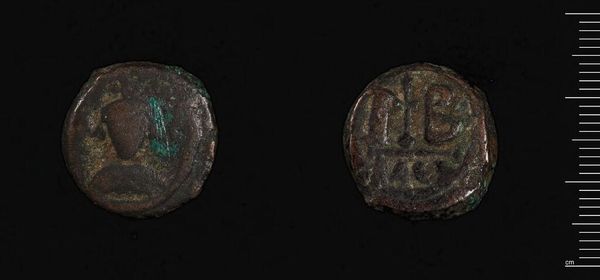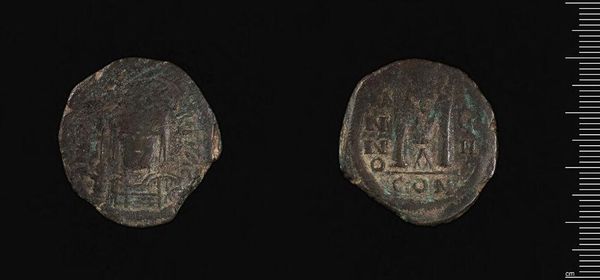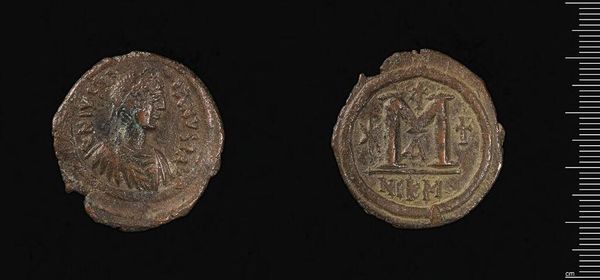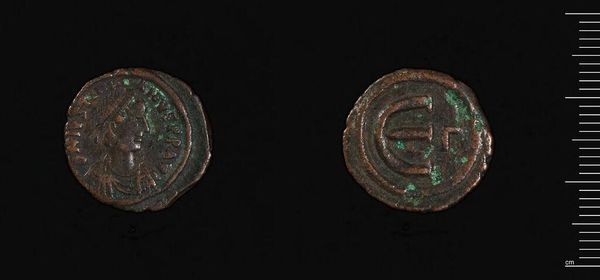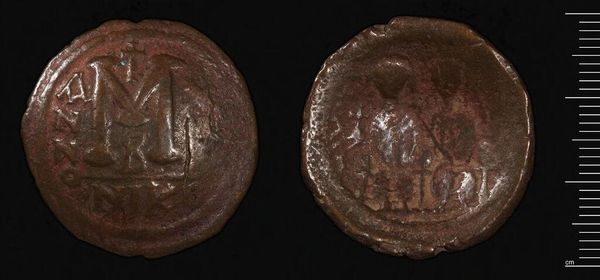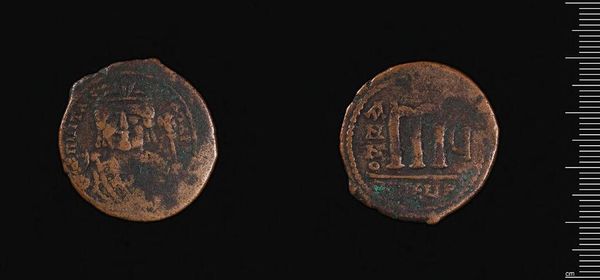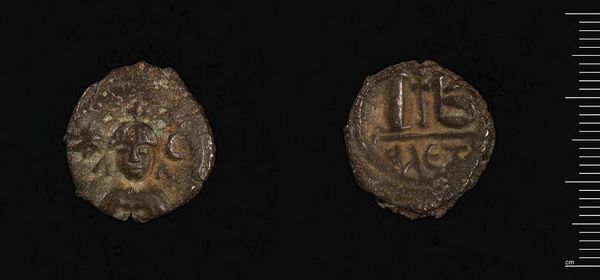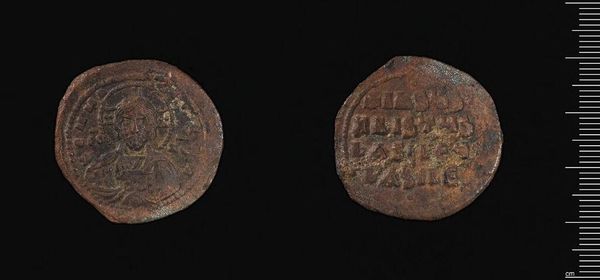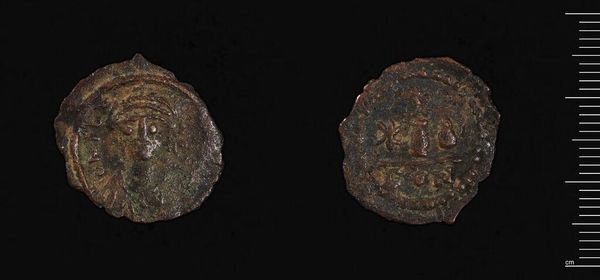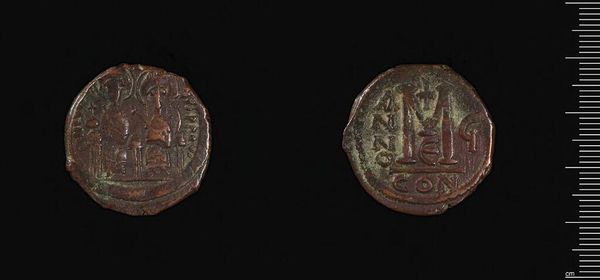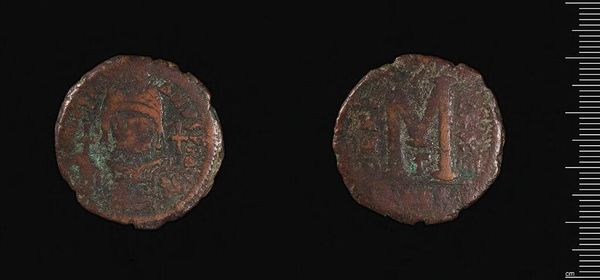
Coin of Maurice Tiberius c. 601 - 602
Dimensions: 4.87 g
Copyright: CC0 1.0
This is a bronze coin of Maurice Tiberius, likely made in Constantinople during his reign from 582 to 602 AD. As a piece of currency, the coin connects directly to the economic structures of the Byzantine Empire. But it also speaks to the image-making strategies of the emperor and the religious and political values of the culture. On one side, we see an image of the emperor himself, wearing a crown. On the reverse, the Chi-Rho symbol, a combination of the first two letters of "Christ" in Greek, which became a symbol of Christian belief. The coin therefore announces the emperor’s authority while associating it with divine sanction. Historians study coins like these for all sorts of reasons. They are important not just for the study of economics, but also for understanding political ideology, religious belief, and the emperor's self-presentation. Examining surviving coins alongside written documents helps us to better understand the complexities of Byzantine society.
Comments
No comments
Be the first to comment and join the conversation on the ultimate creative platform.

